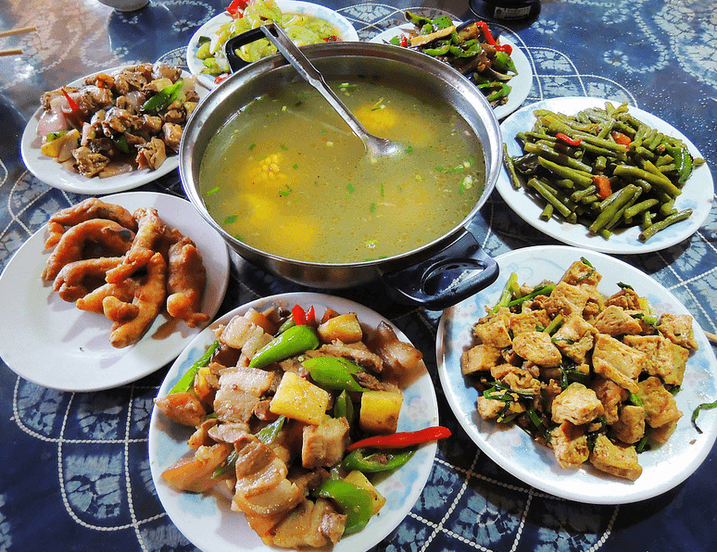Traditional Chinese Music
Rating: 9,4/10 (2120 votes)  China – a distinctive country, and this is manifested in all its components, including in musical culture. Tourists who know a lot about music and want new sensations on this front will be pleasantly surprised by tours to China. Traditional Chinese music is very different from everything that the ears of representatives of Western civilization are used to hearing. It plays national musical instruments, and a special staging of performances is traced.  Dizi The origin and development of Chinese folk musicThis art form in China dates back to the V century BC, with a work called « Book of Songs. This collection contains 305 lyric poems. The next stage in the development of traditional Chinese music is the creation in the 4th century BC. song and poetry school, which was founded by Qu Yuan. His most significant contribution is a collection entitled Chu Verses. The reign of the Han and Zhou dynasties was a favorable era for the development of the musical institute in China. Specially appointed officials collected folklore. Confucianism had a serious impact not on music at this time, often in the works of this time you can hear ceremonial and religious notes.  Lip organ (sheng) During the Tang and Song dynasties, musical science continued to develop. Composers wrote hymns, works for a wide and narrow audience, lyrics, sang praises of the Chinese people, the beauty of nature. Important: In the traditional Chinese spelling of the word `` music '' and 'beauty' are written with the same hieroglyph, differing only in pronunciation. VII-XI centuries are notable for the emergence of musical theater and traditional Chinese opera in China. The performances were complex performances that included dance, music, costumes, dialogue and actors. Until the 17th century, Chinese music developed in a closed environment. Traditions that were born thousands of years ago were transformed into meager genres that did not differ much from each other, and only by the beginning of the 18th century, advances in the formation of new directions of music began. By the 20th century, China began to actively borrow Western trends in music, maintaining this exceptional authenticity. Until the beginning of the new millennium, several hundred musical genres appeared in the Celestial Empire, one way or another, based in traditional folk culture.  Gong Chinese folk instrumentsDiziDizi, or simply Di – it is a wooden transverse flute, actively used in almost all areas of Chinese music. According to legend, the instrument was created specifically for the Yellow Emperor Huangdi. There are several options for the Dee flute – they are made of wood, bone and even jade. ShengThe Chinese lip organ, or sheng, is one of the symbols traditional music of the Celestial Empire. The sheng classical organ had 12 octaves of sound, thanks to the bamboo tubes. Modern instruments are made of metal, they are divided into three types in terms of pitch - – top, alto and bass. GongPerhaps the most famous of Chinese folk instruments, the first centuries of its existence was used only for ceremonies and rituals. Now gong has more than 30 varieties, each of which is an attribute of its own musical genre – from classic to experimental rock.  Chinese violin (erhu) PaixiaoChinese version of panflute – paysiao – was invented in the II millennium BC. To this day, the tool has come down almost unchanged - – 12 bamboo tubes form a single flute with a soft but deep sound. GuanThe closest Chinese relative of the oboe. Guan – it is a reed flute made from bamboo or other types of wood. The classical instrument has a row of 9 holes, although shorter versions of the guan have become popular lately. ErhuTraditional Chinese violin with two strings. Sounds as close as possible to typical high-pitched bowed instruments. Currently, one of the most popular instruments throughout the East Asian region. You can often hear erhu in the music of western folk groups.   Chinese lute (pipa) Contemporary genres of Chinese musicJungo FengContemporary genre of Chinese music – Jungo Feng – appeared at the very beginning of the XXI century. Essentially – it is a mixture of all popular genres of the West with a unique Asian flavor. The style does not have strict frameworks and depends heavily on current fashion trends. Mengu MingeMongolian style – Mengu Minge – despite the closeness of the cultures of the two peoples and the whole region of Inner Mongolia, for the majority of the Chinese – exotic. For the Celestial Empire, this genre often rises on the same level with European folk, although in its sound and stage entourage it is certainly Asian aesthetics. Xi'an MingeTraditional tunes of Tibet by the end of the 20th century have become one of the genres of Chinese pop music. Xi'an Minge is now – one of the most demanded pop styles from the regional level – before state concerts. The melodious melodies of Tibet are often used in various Chinese vocal schools. Daitsu MingeTraditional genre of Yunnan province – Daitsu Minge – these are major songs and instrumental compositions for fast dances. A frequent element of execution – a mixed choir of male and female voices. The signature instrument of the genre is the Hulusi flute. Lao ShanghaiThe genre Lao – which appeared in the era of the colonial dependence of Shanghai; it is a symbiosis of cabaret and jazz traditions with the folk melodies of the southern provinces of China. The genre was finally formed by the 1930s, and since then it has been actively introduced into various layers of Chinese music. An indispensable attribute of Lao – blues and jazz ballads in the style of the golden age of Hollywood and 'gangster' the image of musicians. Gantai GekyuThe term Gantai Gekyu – a de facto synonym for Cantonese or Mandarin Chinese pop. For a long time, the two versions of the texts were irreconcilable competitors, but now there is a weakening of contradictions and a certain symbiosis of dialects. At official concerts in Beijing, songs written in Mandarin prevail, while Cantonese is closer to Hong Kong or Shanghai. Xiaonan MingyaoChinese student song – Xiaonan Mingyao – this is a unique phenomenon in national music, comparable only to the culture of Soviet bards. Essentially – This is one of the analogues of the author's song performed to the accompaniment of an acoustic guitar with minimal involvement of other instruments. The lyrics are different – from romance to protest. Sibei FengBased on northwestern Chinese music, the Xibey Feng genre has absorbed the traditions of regional opera and borrowings from European culture. A distinctive feature of – a rich rhythm section and bright texts on acute social topics. The genre is often called the Chinese version of American pop-rock. YaogongThe Chinese word Yaogong is used to refer to rock music in all its forms – from classic rock and roll to heavy metal. This genre appeared in China relatively late – only in the late 1980s, but with the development of culture, it instantly became popular. There are now several thousand groups and solo artists working in the yaogong genre throughout the country. Entire schools have been founded in Beijing and other cities to train musicians of this genre. Xiao QinxinThe Xiao Qinxin genre, which appeared in the mid-2000s, became a kind of response of Chinese youth to the emergence of hipster culture. At the heart of Qinxin's music – minimalist arrangements and sentimental texts about love and the modern world. From Western genres, the closest possible – indie pop. We also recommend reading Chinese Painting & Calligraphy Topic: Traditional Chinese Music. |




